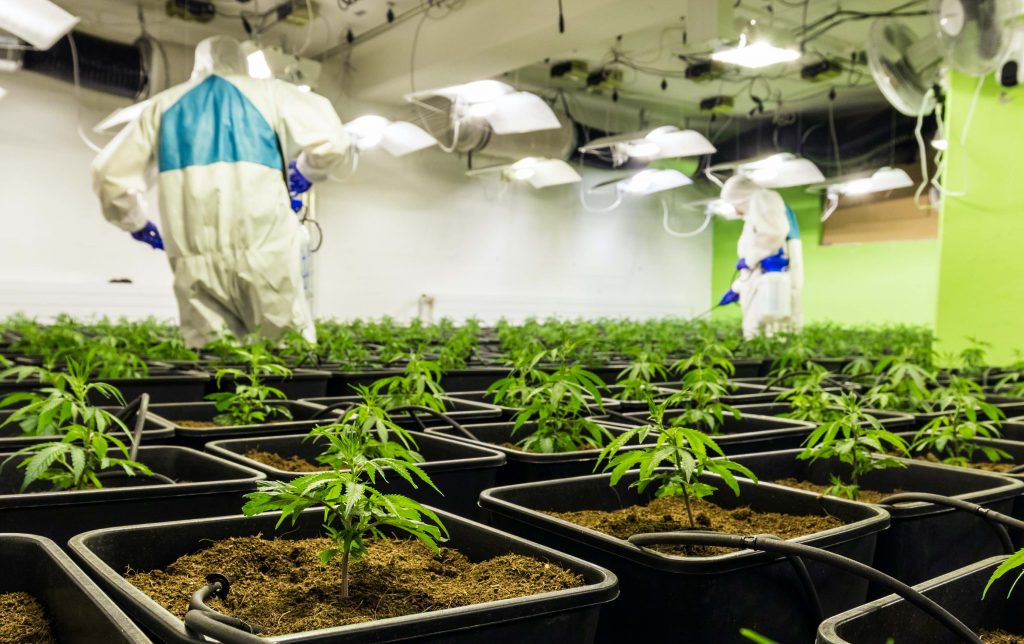
Safety lessons for cannabis growers
February 13, 2020
By
Kelly Fernandes
Always err on side of caution when developing health and safety policies

From an OHS perspective, operating in an emerging industry offers unique benefits and challenges, writes Kelly Fernandes of WSPS. (Felix Brönnimann/Adobe Stock)
Editor’s note: This column first appeared on Grow Opportunity, the source for Canadian cannabis producers.
Cannabis production is a new field experiencing exciting growth. In my work, I’ve met many people in the industry. They’re enthusiastic, highly motivated and eager to learn.
From a health and safety perspective, being in an emerging industry offers unique benefits and challenges. On one hand, your workplace and your people are starting fresh; learning as you go and fuelled by a desire to succeed. But starting fresh can also mean travelling through uncharted territory.
Where health and safety is concerned, it may mean operating without well-established workplace practices, or familiarity with the specific hazards of the industry. For example, few other industries have encountered issues such as skin reaction to cannabis oil, sensitization to cannabis dust and mould, and extended exposure to ultraviolet light.
As the science of health and safety evolves and as you build your own expertise, new requirements and best practices may become easier to incorporate. In the meantime, it’s a good idea to use others’ experience and expertise as your guide. Here are some lessons I’ve learned during my work with the industry.
The legal basics
Health Canada’s safe operating requirements do not supersede provincial occupational health and safety requirements. Federal requirements focus on the safety of the cannabis product and good manufacturing processes, while provincial requirements focus on worker health and safety.
Under provincial health and safety legislation, employers must take “every precaution reasonable under the circumstances” to protect their workers’ health and safety. It’s called the general duty clause and it enables regulators to address hazards to which no specific legislative requirement applies.
Clear as mud? “Reasonable” is the key word. If a precaution could put you out of business, it’s not reasonable. Always err on the side of caution when developing health and safety policies and practices.
Provincial health and safety regulations set out minimum compliance requirements.
Aim higher. Even if your facility is considered a farming operation rather than a manufacturing operation, it’s in your best interests to meet or exceed industrial health and safety requirements. Your workplace will be safer and more productive for it.
How to protect your workers
Now that you know what you’re required to do, let’s look at the steps you need to take to make it happen.
Know what hazards are common to your industry sector. Some are more obvious and immediate than others. For instance, musculoskeletal disorders (MSDs) typically develop over time.
Find out what hazards are present in your workplace. Some common industry hazards include noise, chemical exposure, working at heights, warehousing, machine safety and ergonomics.
From an occupational hygiene perspective alone, what chemicals do you have on site and in what quantities? What are their properties (for example: physical state under normal conditions, boiling point, freezing point, vapour density)? What risks do they pose? Are they stored in a way that minimizes risk (for example: in suitable containers, within the right temperature range, away from incompatible chemicals)?
Learn everything you can about the hazards you have identified and how to control them. What does the law require? Are your existing controls functioning properly? Can you add controls that reduce handling and exposure? Prepare an action plan for reducing risk. You don’t have to jump on everything at once. Focus on high priority hazards first.
Apply the hierarchy of hazard control, starting with elimination — in the process and equipment design phase, if possible. Personal protective equipment should only be used as a last resort.
Be prepared to act quickly if new hazards emerge. Keep on top of new controls that may be more efficient and cost effective.
Engage employees. Provide them with the training and awareness they need to fulfil their roles under the Occupational Health and Safety Act. Involve them in the hazard assessments and listen to their concerns. They have insights from doing their jobs every day that you may not have, and can often suggest simple, actionable ways to improve health and safety.
Document everything — chemical inventory list, handling procedures, training records, Safety Data Sheets, etc. Government inspectors could walk into your facility without advance notice and ask to see your records.
Help is available
If you’re feeling overwhelmed, know that when it comes to developing your workplace health and safety plan, you don’t have to reinvent the wheel.
There are many free resources that you can adapt to your workplace. For example, Workplace Safety & Prevention Services’ (WSPS) online Small Business Centre has downloadable health and safety policy and procedure templates for businesses of different sizes.
You don’t have to do everything yourself. If your workplace doesn’t have the in-house expertise, there’s service providers who do. Take, for instance, chemical exposure testing, which requires specialized equipment. Hiring experts with their own equipment can save you money in the long run.
Tap into your health and safety community so that you can keep up with changing requirements, find out about new resources, and get access to best practices.
Join industry groups, participate in webinars and attend conferences. Many organizations offer these free of charge, such as WSPS Safety Connection sessions; free two-hour sessions held in locations across the province.
Kelly Fernandes is a certified industrial hygienist with Workplace Safety and Prevention Services (WSPS) in Mississauga, Ont.